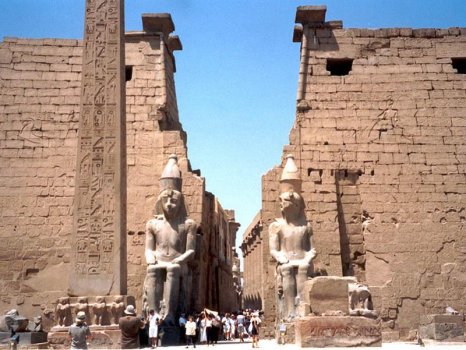 |
In addition to the obelisks, twin colossi of the pharaoh were erected on either side of the entrance to the temple, along with four standing statues. Sadly, only one of the standing figures remains. However, both seated colossi retain their place. Made of black granite, they reached 46 feet (14 meters) in height. Ramses is depicted wearing the striped nemes headdress of pharaoh topped by the pschent or double crown of Egypt. On his brow rears the mighty uraeus (rearing cobra), who duty it is to protect the king.
